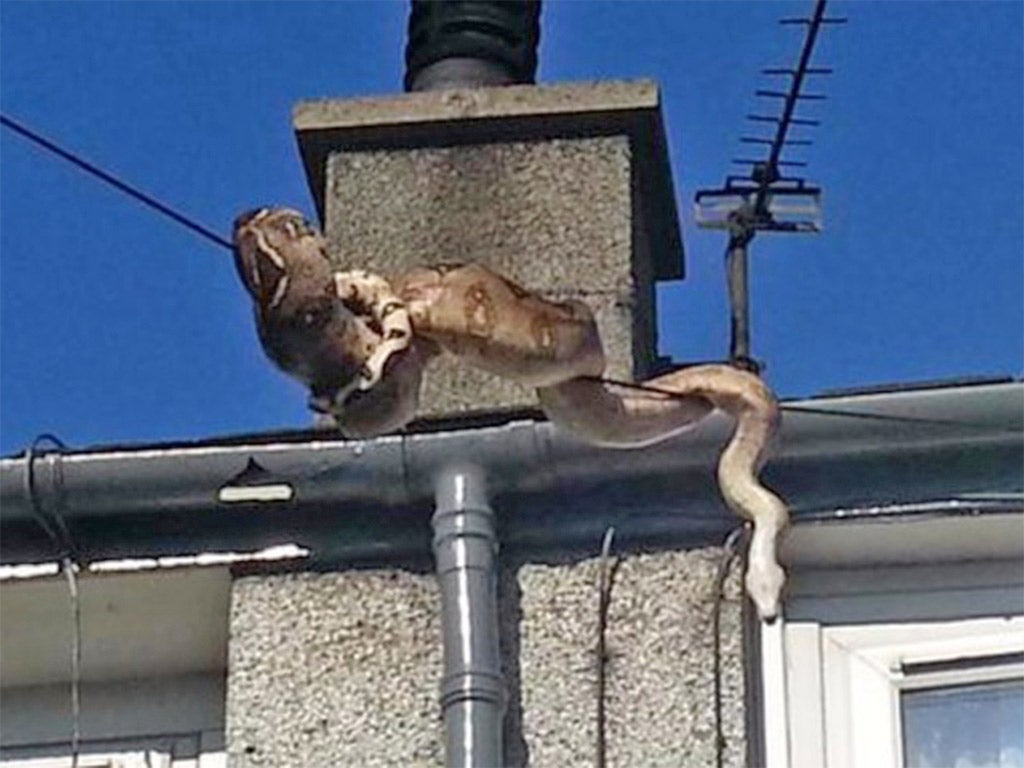Good news for Ophidiophobics: snakes are out but there's nothing to fear
There’s nothing like a heatwave to encourage our slithery friends to slip through the tiniest gaps and make a break; but don’t worry, they won’t bite

Your support helps us to tell the story
From reproductive rights to climate change to Big Tech, The Independent is on the ground when the story is developing. Whether it's investigating the financials of Elon Musk's pro-Trump PAC or producing our latest documentary, 'The A Word', which shines a light on the American women fighting for reproductive rights, we know how important it is to parse out the facts from the messaging.
At such a critical moment in US history, we need reporters on the ground. Your donation allows us to keep sending journalists to speak to both sides of the story.
The Independent is trusted by Americans across the entire political spectrum. And unlike many other quality news outlets, we choose not to lock Americans out of our reporting and analysis with paywalls. We believe quality journalism should be available to everyone, paid for by those who can afford it.
Your support makes all the difference.A boa constrictor's audacious slide for freedom along a telephone wire in Anglesey is enough to send shivers down any ophidiophobe's spine. And he's not the only escapologist around: a week ago a 10ft python named Zombie was seen slithering through the streets of Maidstone, Kent, while last summer a Sri Lankan pit viper slipped out of London Zoo’s reptile building.
As if that wasn’t enough to contend with, there’s a colony of Aesculapian snakes who call Camden Lock in north London home, and our native adders are especially active in summer heat.
For those with a fear of snakes, there is little to take comfort from. Escapology is in these slithery creatures’ nature, according to Dr Anita Malhotra, senior lecturer at the school of biological sciences at Bangor University. “They don’t have limbs and in many ways they’re specialised in moving through small gaps,” she says. “They are strong and adapted to use their muscles – especially boa constrictors and pythons. Some snakes range over wide areas, especially when hunting for mates.
“It is up to people who own snakes to make their cages secure, because they can be difficult to recover if they escape, living quite happily in the warmth of wall cavities or roof spaces. But an escaped snake is very unlikely to cause a lot of damage – it’s unlikely to do well outside in this climate: a boa is likely to target mice and rats, maybe the occasional cat.”
Dr Simon Townson, chairman of the captive breeding programme at the British Herpetological Society, agrees. “They will find small holes, like mice,” he explains. “Snakes are not pets in the same way as dogs or cats, which have an emotional link with their owners. Snakes don’t, and could be compared more with a fish or other lower vertebrates.
“They are likely to wander if they can get out, and find somewhere else to hide. They hide much of the time. But non-venomous snakes are more or less harmless, and as soon as people meet them and realise they are not slimy like a worm, they tend to like them.”
Dr Robert Jehle, senior lecturer at the University of Salford and the scientific editor of The Herpetological Journal, believes that we are more likely to notice an escaped snake compared with a budgerigar or rabbit, and suspects that media attention is making us conscious of snake sightings.
“There are more problems with aggressive dogs than snakes,” he says. “People have a fascination and a fear of snakes. The ones usually found in common pet shops are completely harmless, and you need a special licence to keep or handle dangerous snakes.”
He says that snakes are more active in the heat, and so are more conspicuous because they are moving. And while he believes that our fascination with snakes is evolutionary – and there is good reason to be cautious, as some can be dangerous – he offers some reassurance: no one has died from an adder bite in the UK in the past two centuries.
Ophidiophobia is considered to be a common condition, and a healthy level of distrust towards snakes may be hardwired into our genetics. Researchers at the University of Virginia found that children are better at spotting snakes than caterpillars or frogs, even if they are unaware of their dangerous reputation.
The experts behind the study believe that this matches evolutionary theory, as people who more rapidly detected the presence of a poisonous snake (or spider) would have been more likely to escape the danger and hence to survive and reproduce.
Meanwhile, all this talk of snakes seems to be playing on some people’s imaginations. Last week, a man from Cardiff called professional snake handler Geraint Hopkins at 2.30 in the morning, having spotted a deadly snake inside his computer. On receiving a photograph of the offender, Hopkins quickly diagnosed the problem: a red-and-black computer cable.
Join our commenting forum
Join thought-provoking conversations, follow other Independent readers and see their replies
Comments